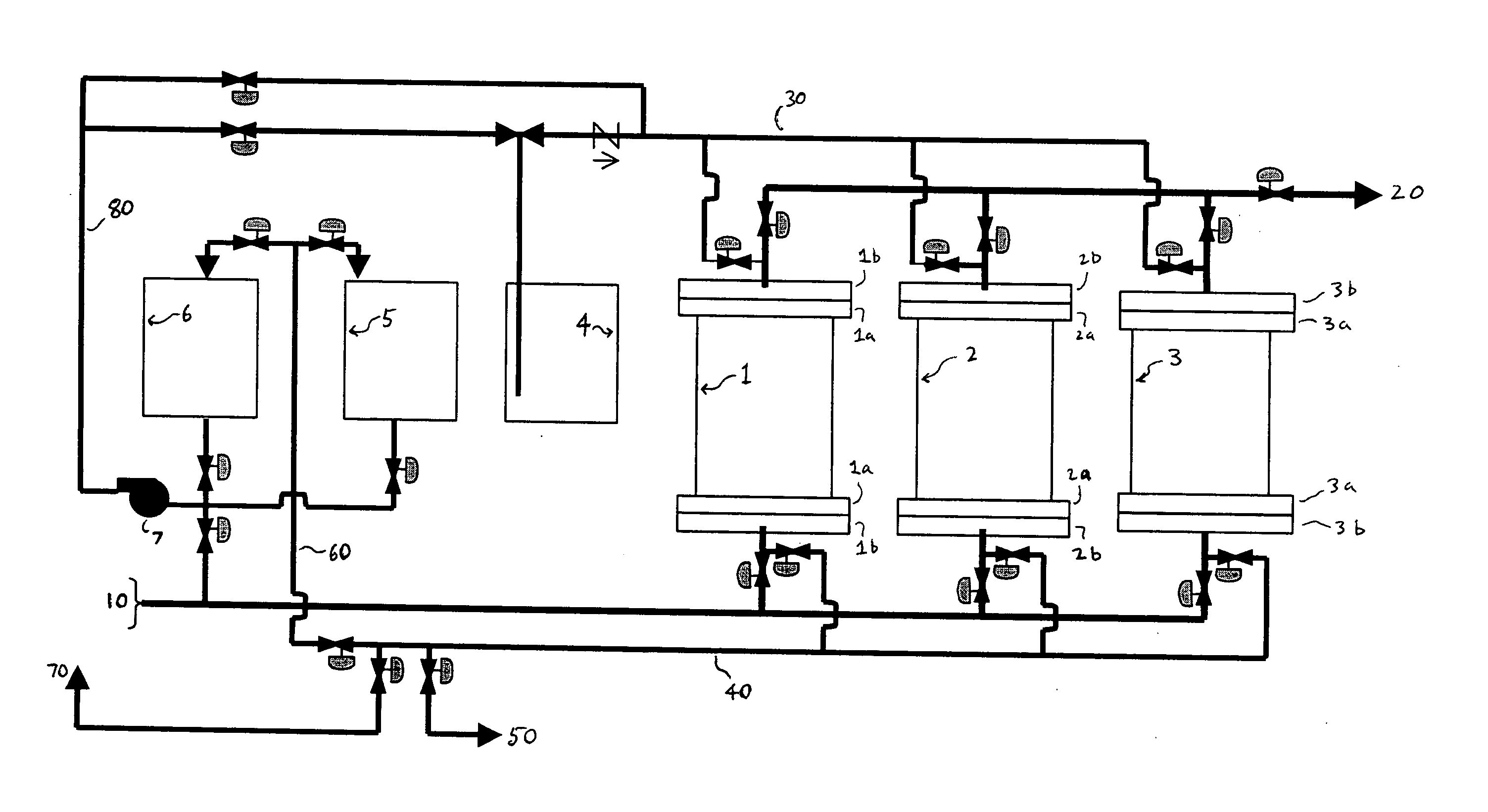Water treatment system with low waste volume
a water treatment system and low waste volume technology, applied in water/sewage treatment by ion exchangers, specific water treatment objectives, ion exchangers, etc., can solve problems such as process instability, process is susceptible to mechanical failure, and suffer from contamination of ground water
- Summary
- Abstract
- Description
- Claims
- Application Information
AI Technical Summary
Benefits of technology
Problems solved by technology
Method used
Image
Examples
Embodiment Construction
[0005]FIG. 1 is a schematic flow diagram illustrating a preferred embodiment of the invention having three vessels.
[0006] A “fractal liquid distributor” is a device for substantially evenly distributing a liquid by means of flow paths which are approximately hydraulically identical. Systems of this type are disclosed, for example, in U.S. Pat. Nos. 4,999,102 and 5,354,460; and in M. Kearney; “Control of Fluid Dynamics with Engineered Fractals”; Chem. Eng. Commun.; vol. 173, 43-52 (1999). The distributor may be constructed of any material compatible with the liquid being treated and the regenerant solution(s). Preferred materials include, for example, PVC, cPVC and polypropylene. Preferably, the fractal liquid distributor is cylindrical and can be mounted on each end of a cylindrical vessel to allow liquid to enter or leave the vessel with a substantially uniform distribution across the cross-section of the vessel. Preferably, the fractal liquid distributor has a single flow channel...
PUM
| Property | Measurement | Unit |
|---|---|---|
| height | aaaaa | aaaaa |
| height | aaaaa | aaaaa |
| height | aaaaa | aaaaa |
Abstract
Description
Claims
Application Information
 Login to View More
Login to View More - R&D
- Intellectual Property
- Life Sciences
- Materials
- Tech Scout
- Unparalleled Data Quality
- Higher Quality Content
- 60% Fewer Hallucinations
Browse by: Latest US Patents, China's latest patents, Technical Efficacy Thesaurus, Application Domain, Technology Topic, Popular Technical Reports.
© 2025 PatSnap. All rights reserved.Legal|Privacy policy|Modern Slavery Act Transparency Statement|Sitemap|About US| Contact US: help@patsnap.com


